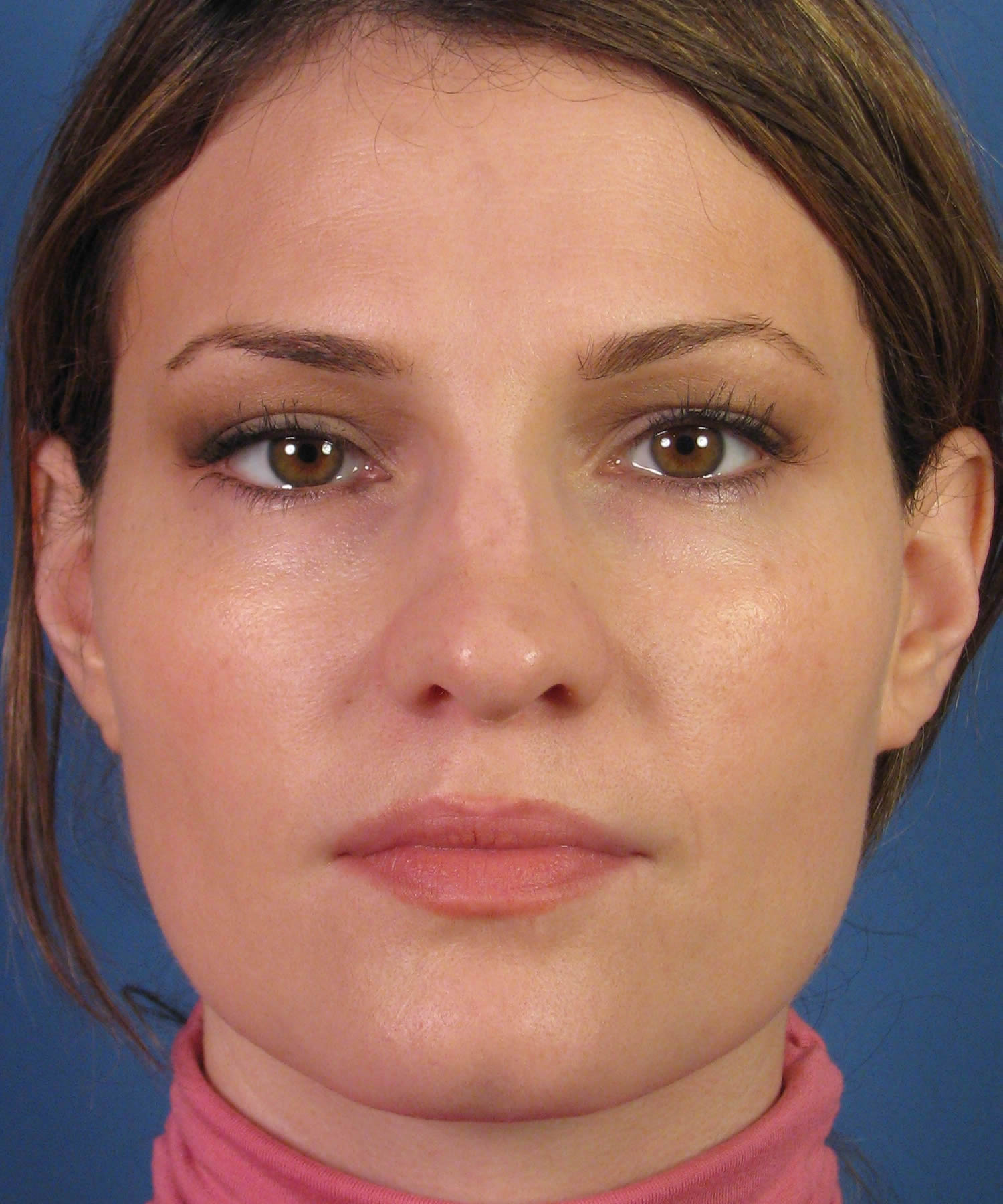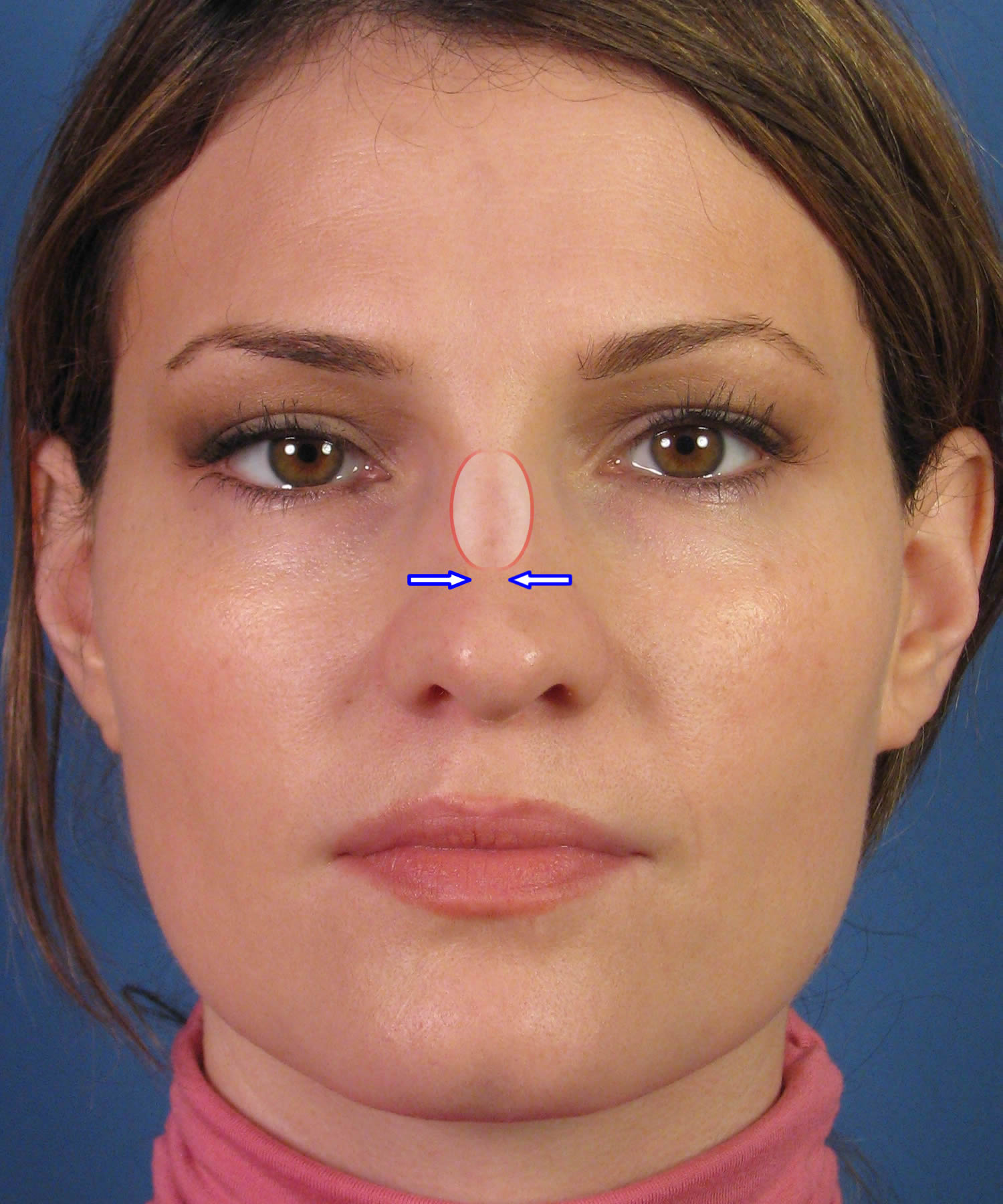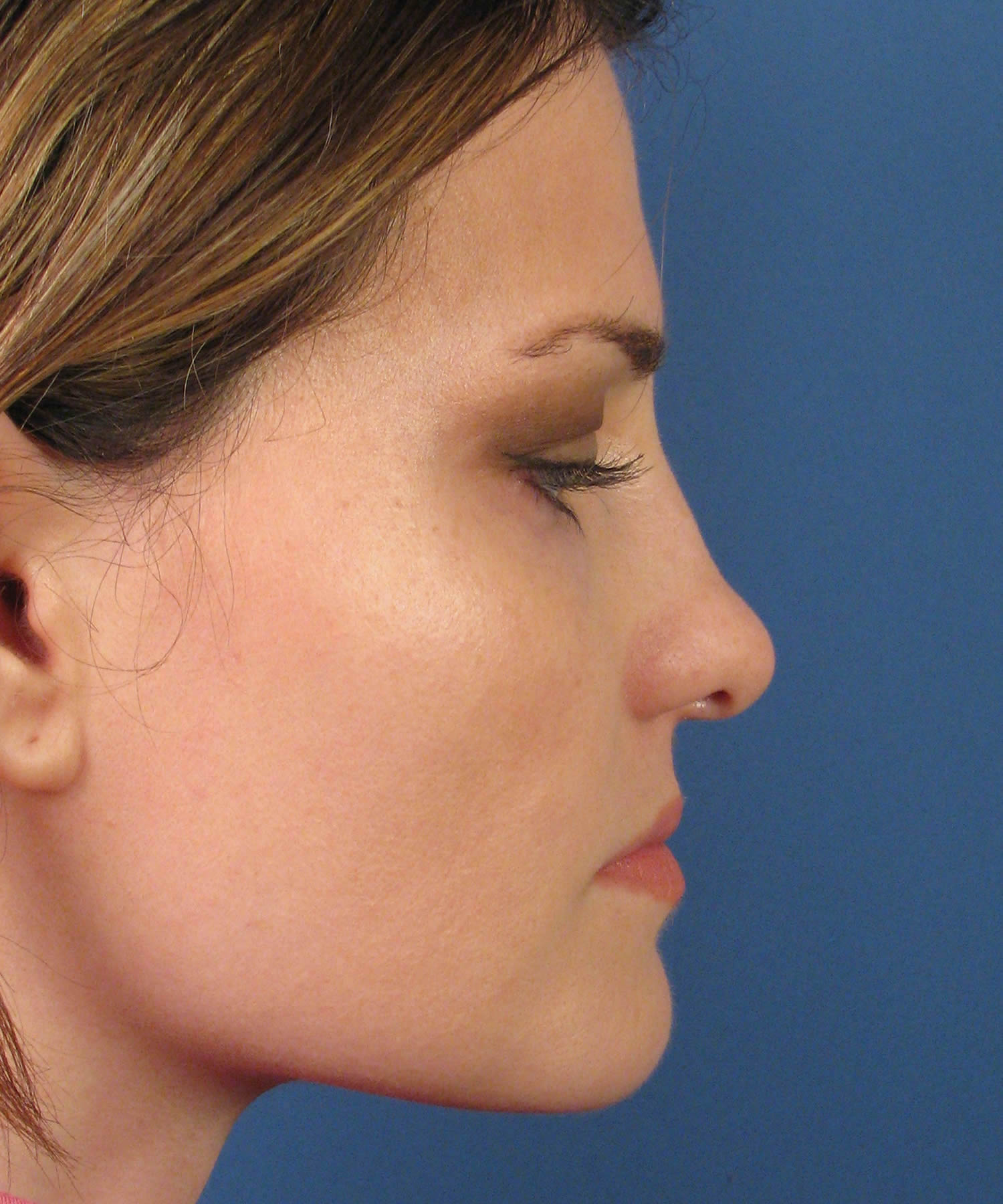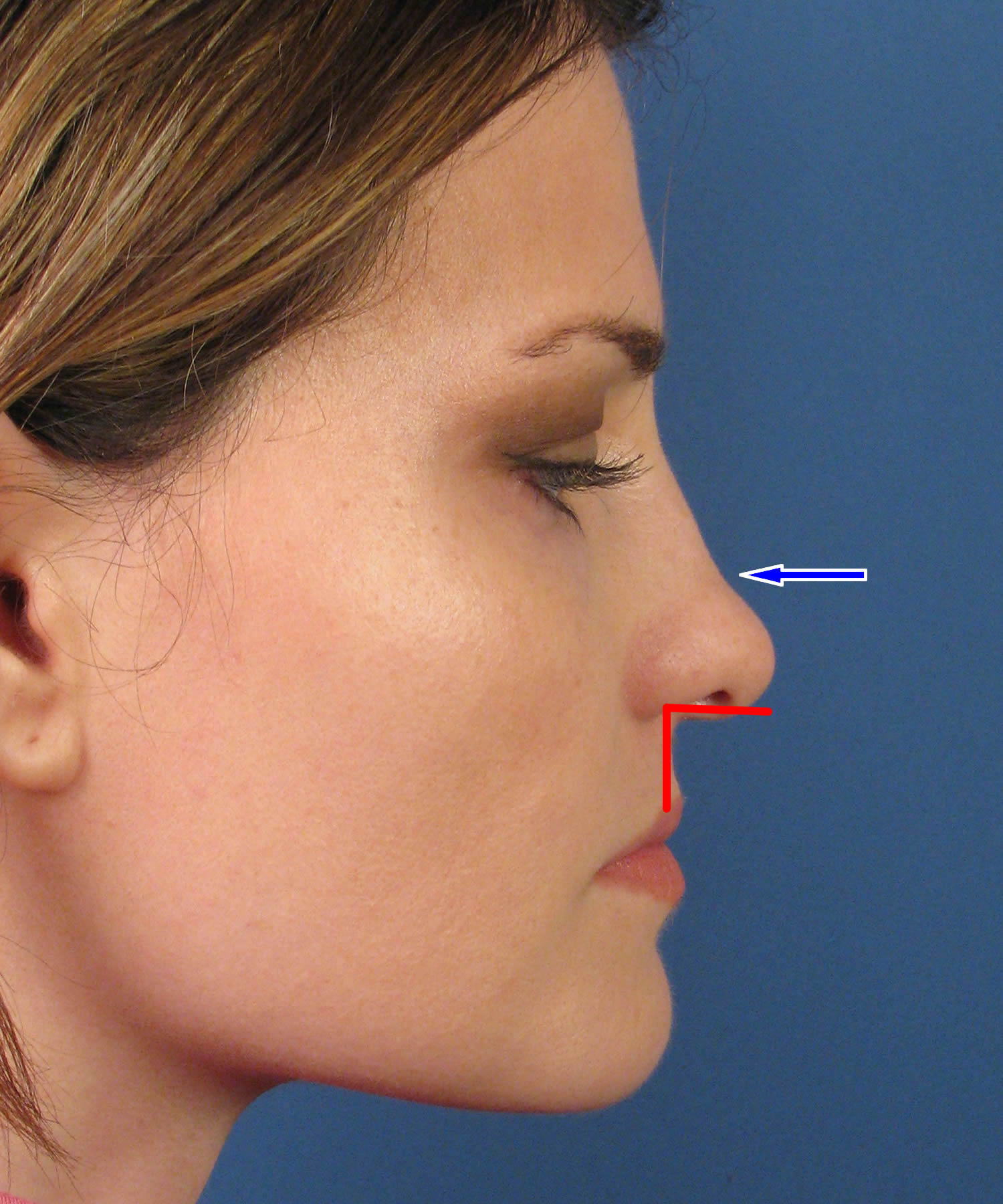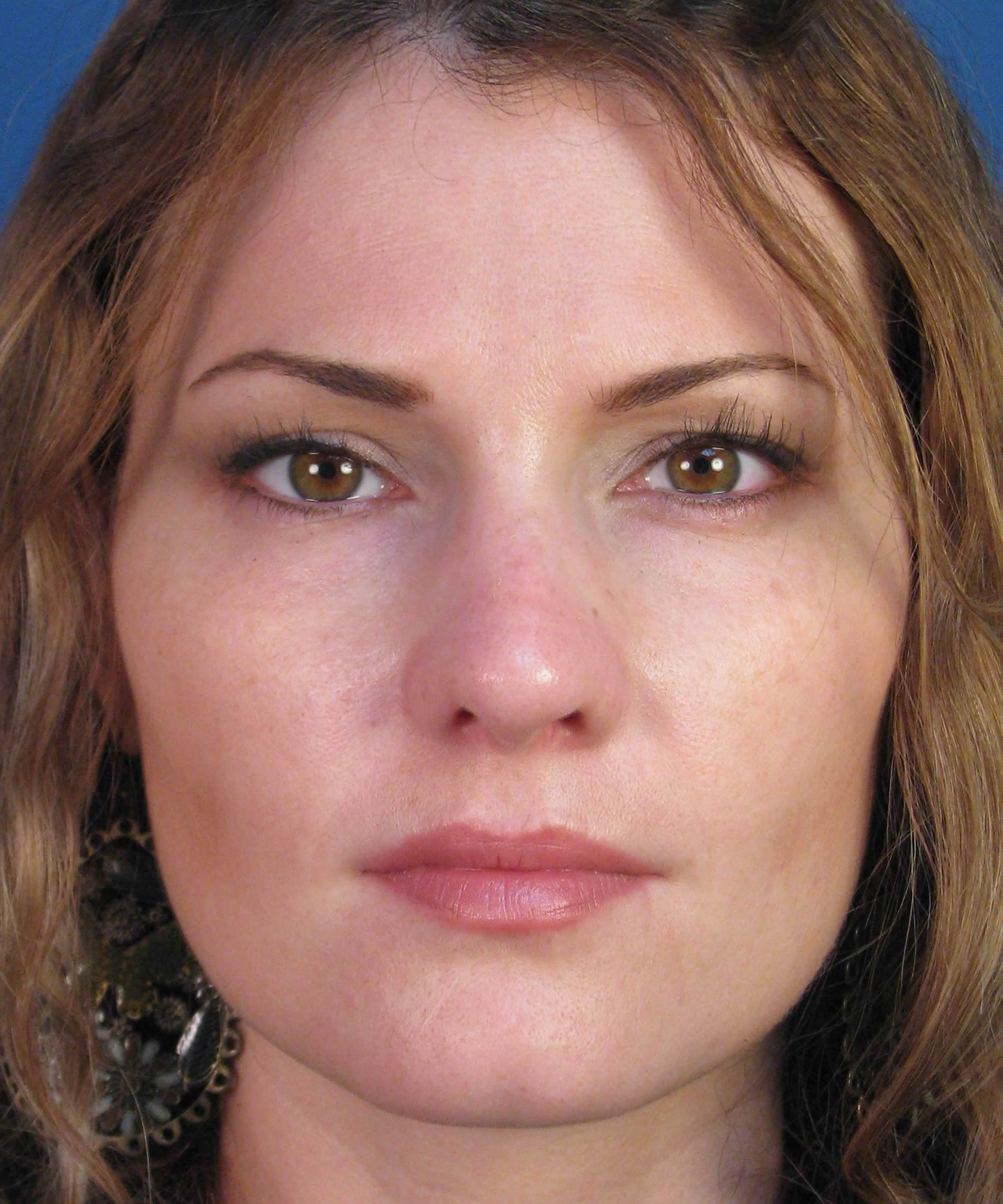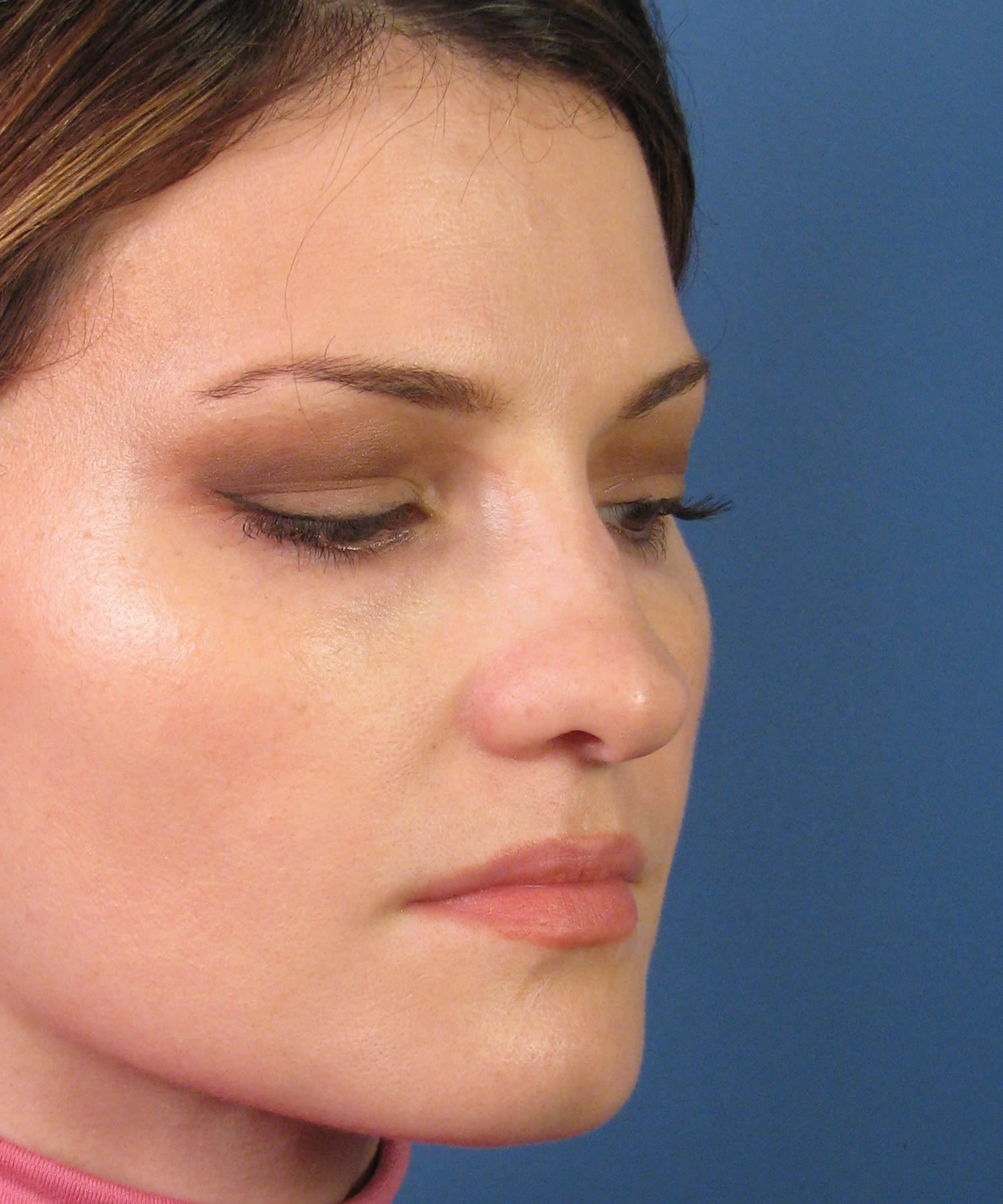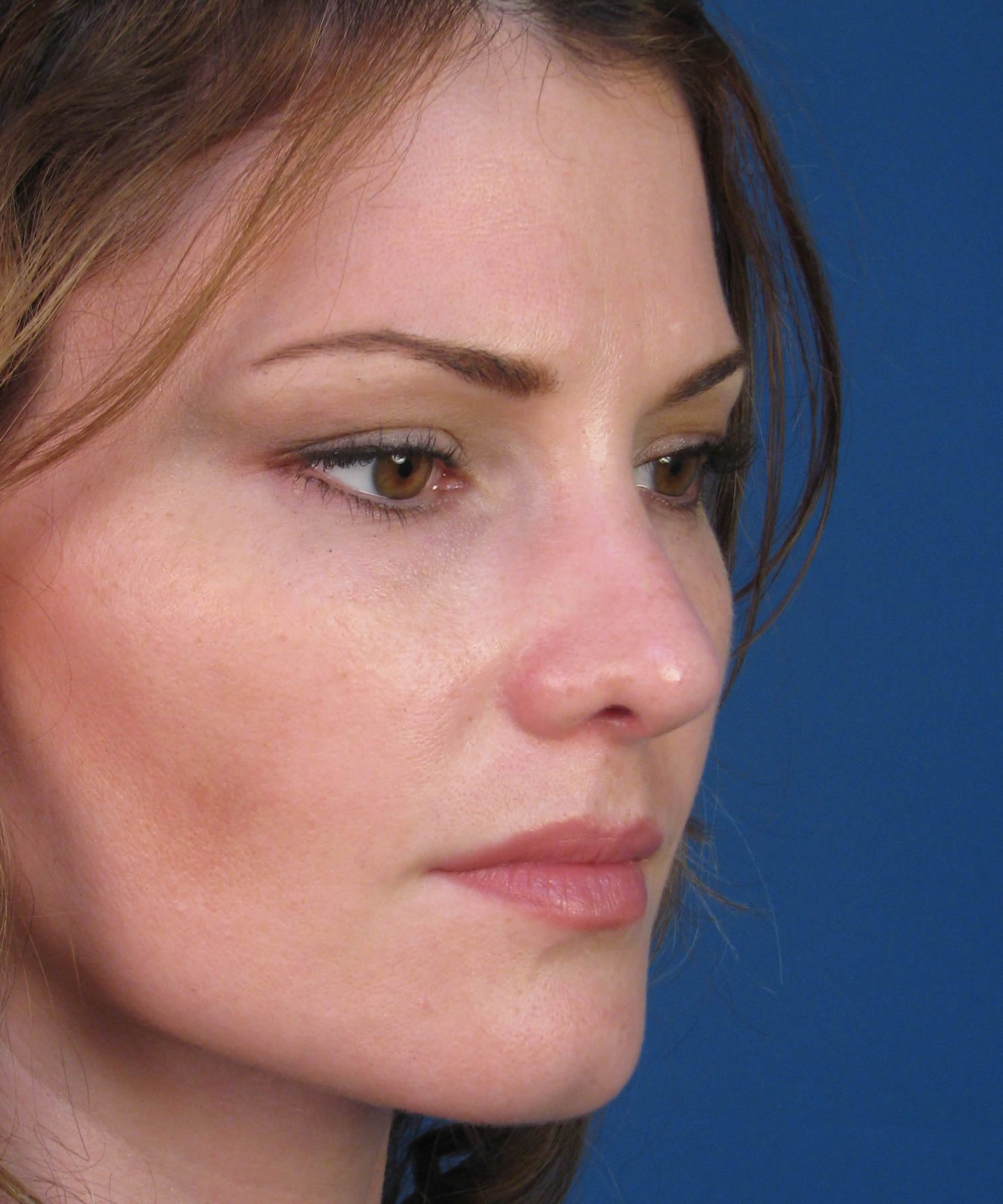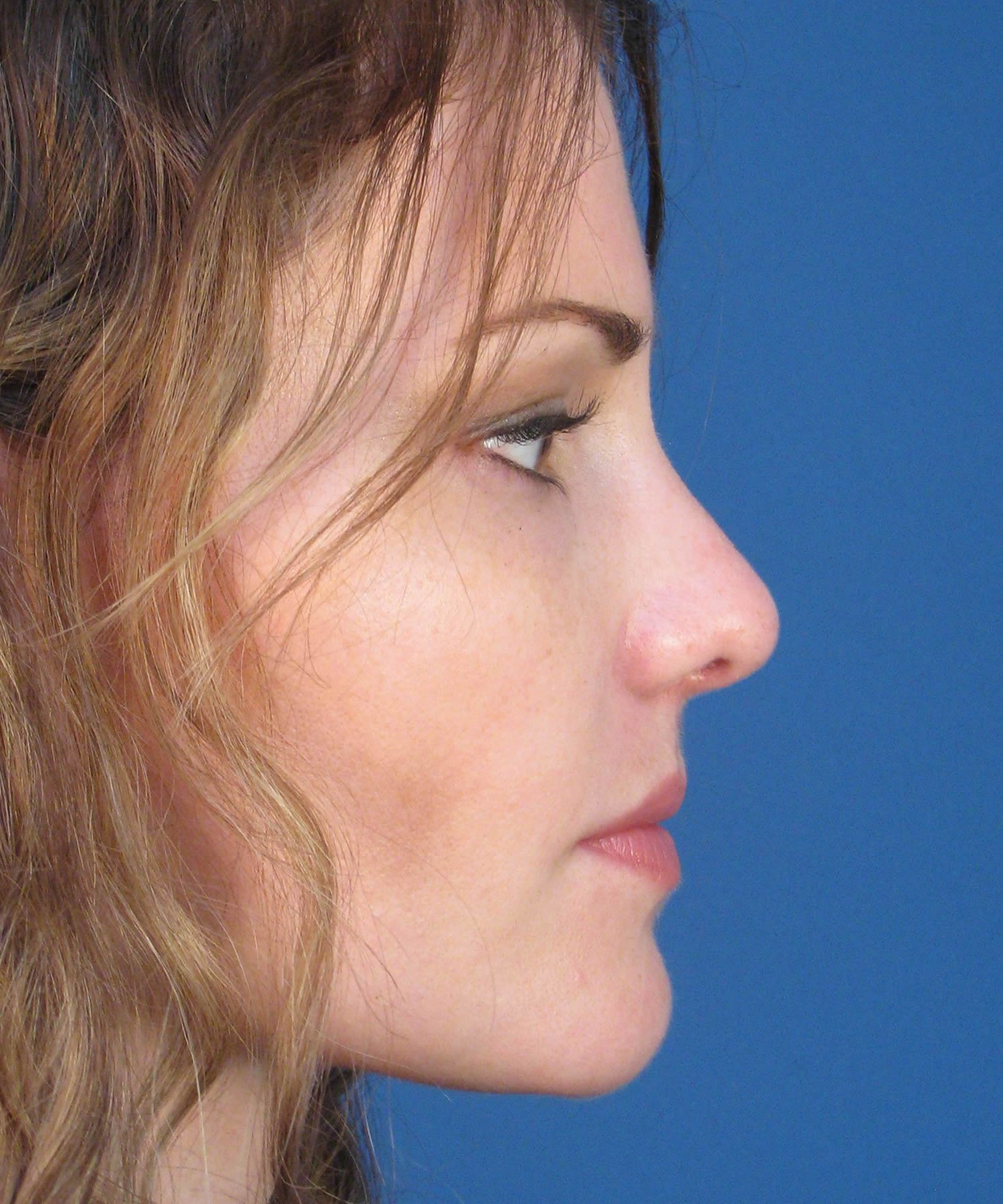This was a great case example to use for discussing the healing process following a closed rhinoplasty procedure (nosejob). This particular San Diego nasal reshaping patient presented to our office noting difficulty breathing through the nose along with some cosmetic concerns about the appearance of her nose. After examination, it was determined that she had collapse of her nasal bridge (also called the dorsum) and a drooping nasal tip (called ptosis and pronounced toe-sis). Both of these issues were significant contributors to her nasal obstruction symptoms as they caused a narrowing of her breathing passage on both sides. In addition, she had what we often refer to as bony horns where the bony portion of her bridge was curved outward contributing to a prominence on both sides plus an abnormally high nasal bridge.
Pre Rhinoplasty Photos
The following pre rhinoplasty photos are shown below to help visually demonstrate these issues. As you can see in her frontal view, she has bilateral bony horns that contribute to a prominence on each side of her nasal bridge, disrupting the normal brow-tip esthetic line (see red parentheses on each side). In addition, her frontal view is washed out in the middle portion where she has a noted depression across the nose. It almost appears as if her nose is flattened across this region (see blue arrows). On her profile (side) view, you can see that her upper bridge is high and tip is ptotic, or drooping down. The red angle is representative of her nasolabial angle. In her case, this is less than 90 degrees, which is about 5-10 degrees off compared with the ideal angulation in a female rhinoplasty patient. To refresh your memory of nasal analysis in rhinoplasty, use this link here to our online rhinoplasty tutorial. In addition, you can see that her bridge is depressed as shown by the blue arrow pointing to the transition zone between the tip and upper bridge of the nose.
Rhinoplasty (Nosejob) Surgery Performed
We decided to perform a combined functional and cosmetic nosejob procedure to help improve her nasal breathing while also enhancing the appearance of her nose. Given the issues she had, we decided on using a closed rhinoplasty approach – meaning we did not make any external cuts on her nose. The incisions were essentially all ‘hidden’ inside of the nose. We began the nose reshaping process with reduction of the upper bridge height with a rasping (sanding) technique. We then augmented the depressed bridge with use of cartilage grafts taken from her septum. We then rotated her nasal tip upward and brought it slightly closer to the face (called ‘deprojection of the nasal tip’). This last maneuver was accomplished with what is called a lateral crural overlay technique. This means that her cartilage was preserved in terms of its structural integrity, but was overlapped on itself to reposition and reshape the tip of the nose. Throughout the rhinoplasty procedure, we made sure to maximize improvements in terms of her nasal function. This included performing a septoplasty (click here to learn more about septal surgery for improved nasal breathing) and nasal valve repair.
Results of Closed Rhinoplasty Surgery
Her surgical results are shown below as she continues to heal from the rhinoplasty procedure. As you can see, she still has notable swelling of her nose as is best appreciated on frontal view. However, the swelling several months out is not as dramatic compared with the appearance of a nose that was done with an open rhinoplasty approach at this same point in the healing process. But despite the persistent swelling, she still looks much smoother in terms of her bridge contour. The previously noted bony horns have now been rasped down along with her upper bridge height. The area of the bridge that was previously noted to be flat on frontal view is now more shapely and transitions better into her nasal tip. The side view confirms a more pleasing bridge height and contour now that the cartilage grafts have been placed above the nasal tip. The tip of her nose is also now in a more optimal position with a nasolabial angle that is closer to 95 degrees. In addition to looking more esthetically pleasing, her nose now also functions much better following the surgery. Over the coming months, she will continue to demonstrate gradual refinement in terms of her nasal appearance with stabilization of her nose around one year out from surgery. I hope this was helpful in understanding possible changes to the look and function of the nose using a closed rhinoplasty approach.

